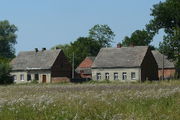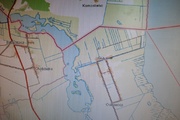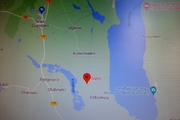Agricultural plot of 3000 m2 located in the town of Giżyn (German Giesenthal, literally translated as a backwater, catchment area). The plot is approximately 150 m from Lake Będgoszcz. The area is covered by the Natura 2000 program. The plot is undeveloped. Use symbol ŁV. There are houses nearby. The village is located in the West Pomeranian Voivodeship, in Pyrzyce County, in the Pyrzyce Commune. Until 1945, together with the second adjacent village of Raumersaue (Ostrowica), it formed a rural commune (Die Gemeinde Giesenthal–Raumersaue), subordinate to the police district in Turz (Amtsbezirk Horst[4]), in Pyrzyce County (Kreis Pyritz) in the Szczecin Regierungsbezirk Stettin, Pomeranian Province (Provinz Pommern). In the years 1945-1998, the village belonged administratively to the Szczecin Voivodeship. In the village there is a fieldstone bridge from 1872. It is located over the canal connecting Lake Miedwie with Lake Będogoszcz. Będgoszcz is a lake located in the western part of the West Pomeranian Lakeland on the Pyrzyce Plain, west of Lake Miedwie, in the area of three communes: Pyrzyce, Bielice and Stare Czarnowo. The Ostrowica River flows through Będgoszcz, and the Krzekna and Bielica streams flow into it. Lake Będgoszcz is one of the remains of the former large reservoir, the so-called Pyrzyce Reservoir, also known as Pramiedwie. In the second half of the 18th century, Emperor Frederick the Great ordered the drainage of the Pramiedwie area. The effect of David Gilly's work was to reduce the area of the reservoir by 575 ha and lower the water level by 2.5 m, which resulted in the creation of new lakes, including Będgoszcz.



